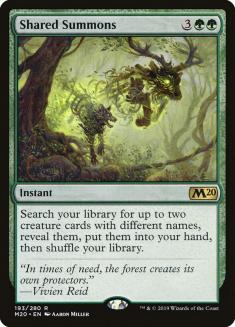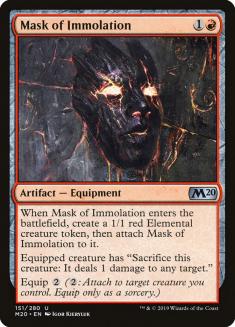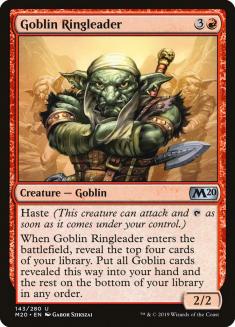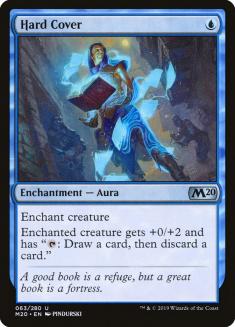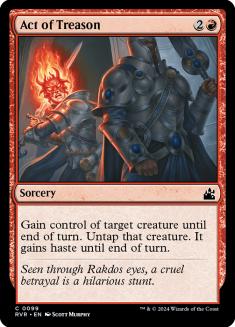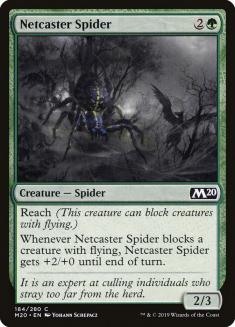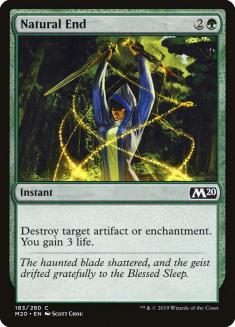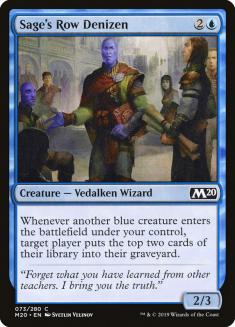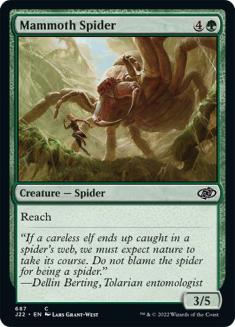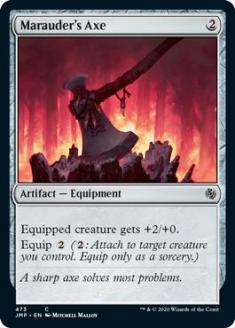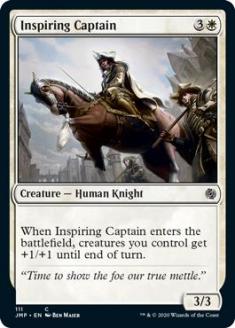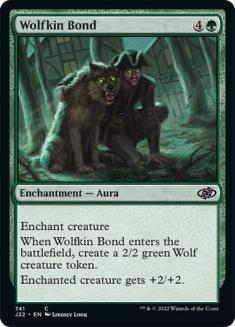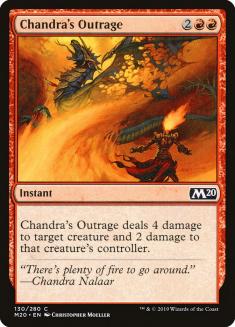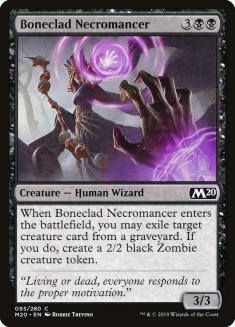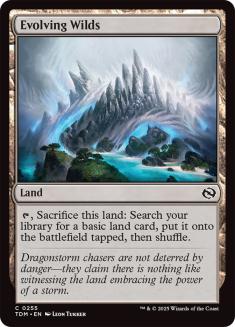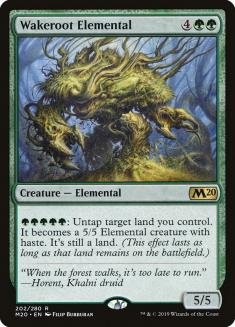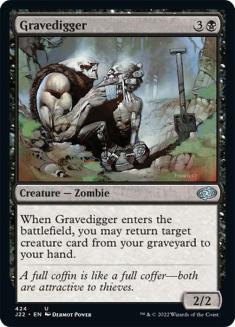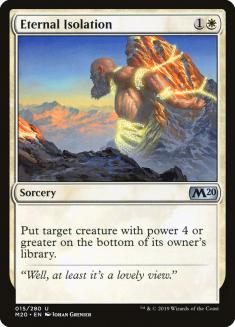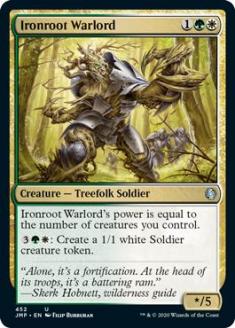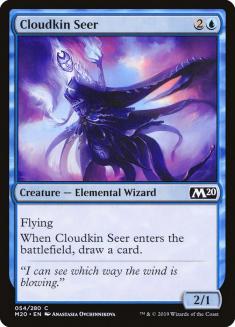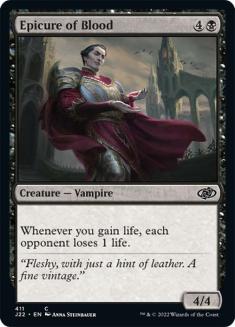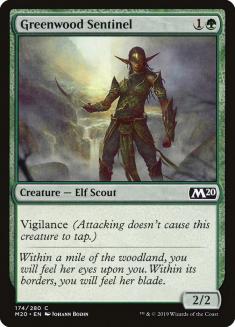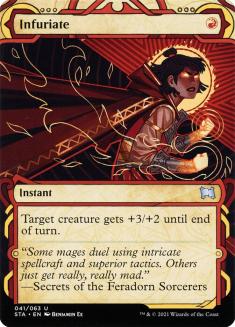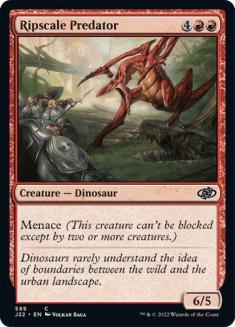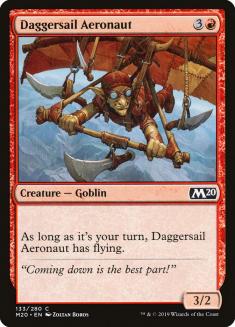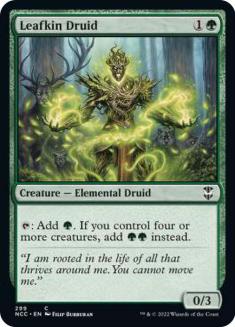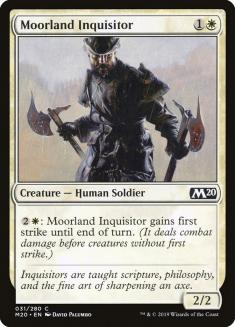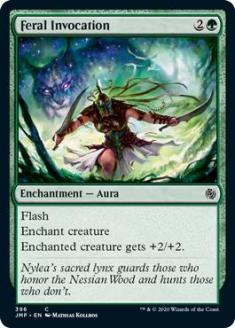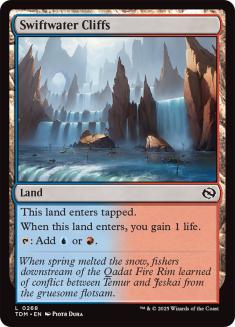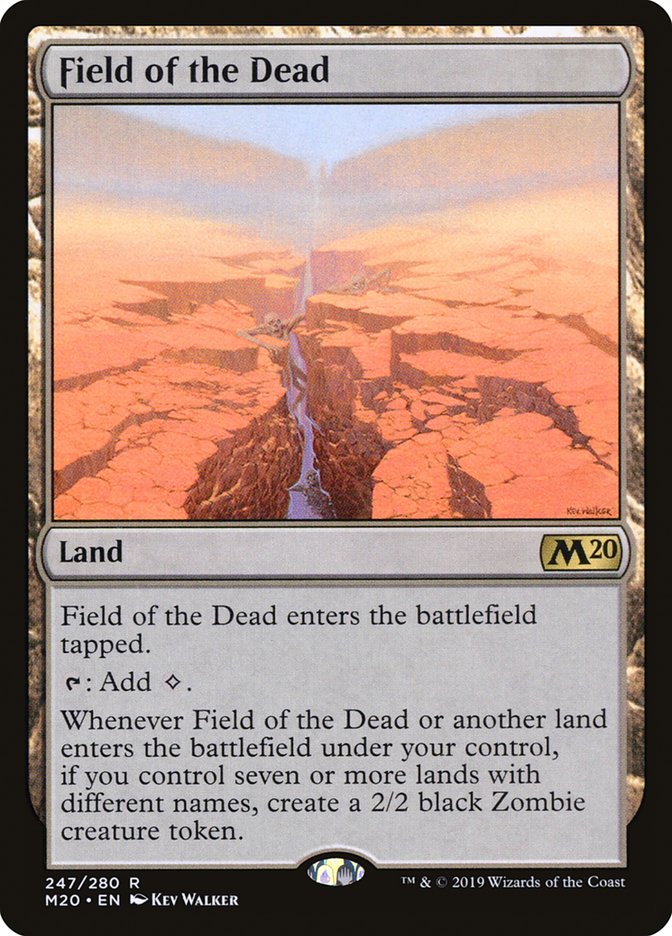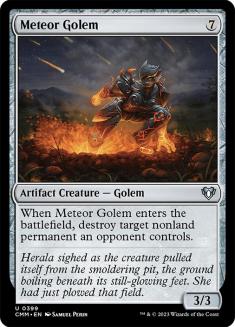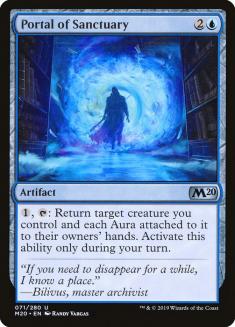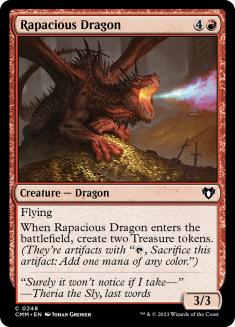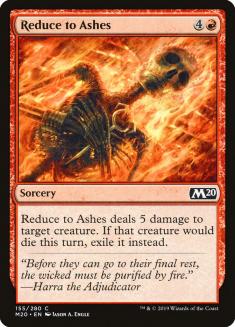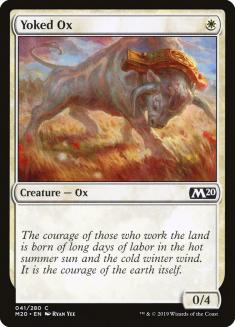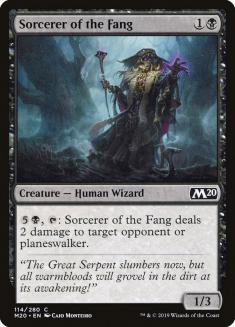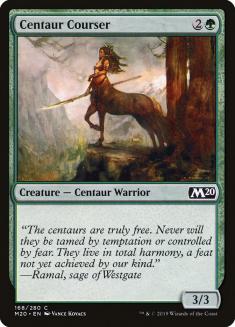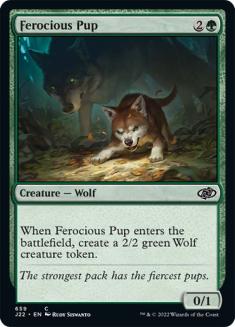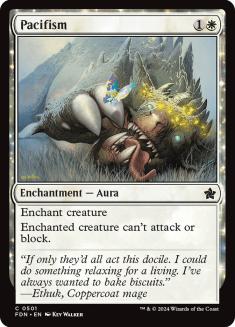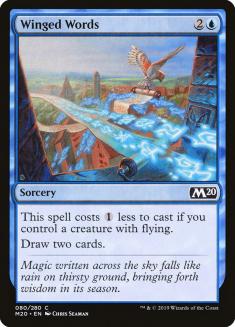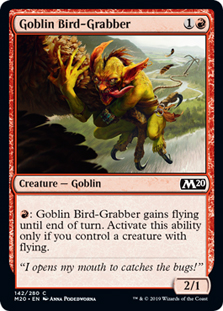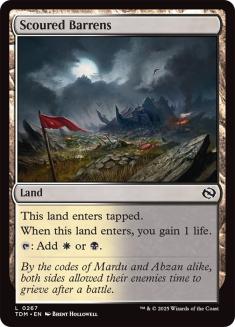Pack 1

3. Chandra’s Outrage
In my experience so far, this format is quite slow. Not record-breaking-slow, but slow. Mono-Red and Selesnya tokens can be quick and potent, but outside of that the majority of the decks are very, very grindy. With this in mind, I believe Shared Summons is a strong rare. I wouldn’t be surprised if it’s still too clunky, but it’s early in the format and I want to get reps with the card. Starting my draft with Shared Summons ensures I can prioritize high-impact targets to maximize the impact of the card as well.
Mask of Immolation is much better than you think it is. There are surprisingly many one-toughness cards in the set. Furthermore, Mask means that your opponent has to play the game as if they’re at a lower life total, since it provides quite a bit of reach. But there’s even more synergy. The token from Mask of Immolation is an Elemental, which is a key component to both the Gruul and Izzet archetypes. It can also be a fine splash in Simic. The more I play with the card, the more synergy I find!
Chandra’s Outrage is a classic removal spell. It’s better than average thanks to the incidental damage, but it’s nothing too special. A card I’m happy to start a draft off with, but not something I’m going to take over cards that can have immense impacts on the game like Mask of Immolation and Shared Summons.

2. Chandra’s Outrage
Mask of Immolation might be one of the most underrated cards at the start of the format. It is easy to get a card’s worth of value out of the front end of Mask due to the number of premium X/1s running around the format like Cloudkin Seer, Spectral Sailor, and Risen Reef. Afterwards you are left with an Equipment that threatens your opponent’s life total as well as having insane synergy with a number of cards. You can combine this with Ogre Siegebreaker or your own deathtouch creatures to start machine-gunning down the opponent’s team. The turn Mask of Immolation comes into play, the token it creates is an Elemental, which often triggers enters-the-battlefield synergy in your Izzet, Simic, or Temur decks that care about Elementals.
Mask also allows you to do sacrifice shenanigans by casting Act of Treason on your opponent’s creatures and then sacrificing them to your Mask. Additionally, it is insanely powerful in tandem with Moldervine Reclamation if you want to go really deep. I’m sure there are other synergies I haven’t discovered yet, but I am confident this card is very powerful and makes other cards around it better in the format. You can’t ask for much more than that from your first pick.
Chandra’s Outrage and Shared Summons are very close for the number two spot in the pack, but Chandra’s Outrage gets the nod from me due to consistency and the importance of removing creatures from the battlefield in this format. I have Outrage as the second-best red common overall, and it has consistently impressed me in the format, as four damage is enough to kill all but the nastiest of threats.
Shared Summons is very powerful when you have two bomb creatures to go get, but that isn’t a guarantee draft-in and draft-out. When including this card in your deck, you want to make sure you have plenty of ways to clog up the ground and air with cards like Netcaster Spider and Mammoth Spider so that you have time to cast this card and reap the benefits of your best creatures hitting the battlefield. My opponents have frequently conceded to the two revealed creatures after I have cast this on a stable battlefield, though, which is a nod to its power level when you get there with it.

3. Chandra’s Outrage
There’s one word that I would use to sum up the gameplay of Core Set 2020 Limited: value. By and large the aggressive decks aren’t supported and the games go long. When the initial turns are over and the dust settles, it’s important to be able to generate card advantage and selection beyond what the top of your library offers. That’s where a card like Shared Summons comes in. Before playing with this set, I would have thought this card was entirely too slow. It’s reminiscent of Ignite the Beacon from War of the Spark: powerful, but incredibly slow. Battlefield presence isn’t as important in Core Set 2020 since you don’t need to worry as much about pressuring opposing uncommon planeswalkers. So you can afford to play this powerful double-tutor spell. Being able to grab your two best creatures, a Gravedigger to bring back your best creature, and just a pair of Spiders to fend off an opposing flying onslaught are all fantastic modes for this versatile spell.
Beyond the rare, Mask of Immolation is the card that most appeals to me. There isn’t a Rakdos sacrifice deck in Core Set 2020 like we’re used to seeing, but this card still does a lot of work. It can help finish off a creature damaged from combat, pick off a utility creature like Spectral Sailor, combine with Bladebrand or Sedge Scorpion to build your own Murder, or create a good old-fashioned steal-and-sacrifice with Act of Treason. As far as the commons go, Chandra’s Outrage, Evolving Wilds, and Netcaster Spider are the three standouts for me, but I have to give the nod to the removal spell over the cheap blocker and the mana fixing.
Pack 2

2. Gravedigger
Cloudkin Seer shouldn’t be a common. I get that Wizards of the Coast is trying to push the power level of cards at common, and that’s overall good for Limited, but this is a bit too far. Flyers are your bread and butter of impactful Limited cards. While wind drake isn’t as good as it used to, tacking on value makes a real card. Eldrazi Skyspawner was a stupidly good common, and this is better. There are also Elemental synergies, flyer synergies, and enters-the-battlefield synergies. I think this card is better than the majority of uncommons in the format, and is the best common by a wide margin.
You may notice that Murder didn’t make my list. The card is very good, but I don’t believe you should prioritize removal as highly in this format. So many of the creatures provide incidental value that you’re often trading down on resources if your plan is to point-click-kill. Gravedigger is one of the best two-for-one creatures you can get in Draft. It’s not as cleanly good as Cloudkin Seer, but I’m always happy to pick up Gravedigger early. It’s another card that is even better in this format than usual due to the density of creatures with enter the battlefield effects and the overall speed of the format.
My last slot goes to Ironroot Warlord. I think this card is incredible, and the only reason I can see not considering it is a disdain for the color white. The thing is, white is a tokens deck in this format. I believe that Raise the Alarm is the best white common. Yes, better than Pacifism. This is for similar reasons to my statement above regarding Murder. Ironroot Warlord is one of the best cards for Selesnya, which I believe is the only aggressive deck that you can reliably draft. Furthermore, people aren’t coming as prepared for aggressive decks given the format speed, which only makes me like them more!

2. Murder
3. Gravedigger
Not one, but two commons over Gravedigger out of this pack, which goes to show that R&D has definitely worked to push the power level of commons for Limited due to their recent FIRE philosophy. I have Cloudkin Seer as the best overall common in the set, and it has definitely delivered. You get an evasive threat and a relevant creature for a good mana cost while still cantripping on entering the battlefield. Casting Cloudkin Seer on Turn 3 virtually guarantees that you will get to play a relevant game of Magic, as it replaces itself and helps you hit future land drops, while remaining relevant well into the late-game. Tack on the Elemental synergies, and I cannot jam enough copies of this card in my deck. Blue being the top color overall in the set is partially due to the power level of Cloudkin Seer at common.
Murder over Gravedigger is a bit of a hot take, but I’ll defend the pick here. I’m looking to pair black with either blue or green, and I think each card excels in a different color pair. Dimir really wants the first copy of Murder because it allows you to create some disgusting loops when combining it with Scholar of the Ages and a Soul Salvage or Pulse of Murasa. The format is slow enough that you build your deck in a way that you reliably get to the late-game with proper defensive speed, and once you get there, this loop is nigh-unbeatable.
In Golgari, Gravedigger gets a lot closer to Murder because the color pair really cares about utilizing the graveyard as a resource, but I still think Murder gets the edge for me at this point in the format. All of the premium removal is at common (almost none at uncommon), and everyone is taking Murder quite highly, so the first copy is very valuable and difficult to pick up. Gravedigger does allow your deck to grind, but I have often found that it is fairly easy to blank the 2/2 bodies left around by Frost Lynx or Gravedigger in the format. Consequently, I think Soul Salvage does a reasonable Gravedigger impression, while there is no substitute for Murder in the format.

1. Gravedigger
3. Murder
When Murder was previewed at common, I think it was fair to say everyone thought that would be head and shoulders above the rest of the commons. Move over Ob Nixilis’s Cruelty, there’s a new sheriff in town. And then Cloudkin Seer showed up and changed everything. This card at common is one of the main reasons that “value” is the word I would use to describe this format. And a powerful enters-the-battlefield ability like “draw a card” is one of the best things you can tack onto a creature.
But Gravedigger gets my choice for the best pick in this pack. In comparison to the Seer, it is a mana more and doesn’t have evasion, but the ceiling on its effect is so much stronger. And that’s incredibly appealing to me! You can help set it up on curve with Gorging Vulture and use it conjunction with Soul Salvage, Pulse of Murasa, and my personal favorite Blood for Bones to keep the value train on track. It’s close with Cloudkin Seer, and I could see my order changing eventually, but I’m going to stick with Gravedigger at number one in this very close lineup of value creatures and premium removal.
Pack 3

1. Meteor Golem
3. Winged Words
Meteor Golem is one of the best uncommons to start off a draft. As I’ve said many times in this article, the format is slow. It’s not hard to cast seven-mana creatures, especially with cards like Gift of Paradise and Leafkin Druid at common. It is on-theme with the enters-the-battlefield cards, so you can take over the game with the Golem alongside the next-best card in this pack: Portal of Sanctuary.
Portal of Sanctuary is a card I started high on, reread it and lowered my evaluation (I originally missed that you could only activate it on your turn), and have now come all the way back around to taking the card highly. There are just so many creatures with enters-the-battlefield effects in this format. You can kill permanents with Meteor Golem, make 2/2s with Ferocious Pup, draw cards with Cloudkin Seer, and the list goes on. It is so easy to recuperate the value lost in spending three mana on this card. Add in that it entirely blanks cards like Pacifism and Sleep Paralysis, and you have yourself an impactful Magic card.
Yes, I am taking Winged Words over Pacifism. There are too many ways to embarrass Pacifism, and this format is a Divination format. In Dominaria, I could never get enough copies of Divination. I’m not sure if that will be the case in this format, but I wouldn’t be surprised. Add in the flyers subtheme — there are more flyers in this format than most — and Winged Words becomes a very powerful card. If you ever cast this card for two mana, it feels like cheating. I take it highly, and you should too!

1. Meteor Golem
2. Winged Words
3. Pacifism
Core Set 2020 has several defining characteristics, and one of the most important to grasp is that all of the seven-drops with the exception of Dragon Mage are powerful and worth building your gameplan around to allow you to get to the late-game. The tools exist, between premium blockers like Netcaster Spider and incidental lifegain tacked onto cards like Gift of Paradise to allow you to slow the game down enough to reliably cast your seven-drops. Once you cast a card as powerful as Meteor Golem, you usually close the game out fairly quickly afterward, especially with the multitude of ways to loop or rebuy the effect with cards like Soul Salvage, Unsummon, or even locking your opponent with Portal of Sanctuary.
Another defining characteristic of Core Set 2020 is that card advantage is very important thanks to the frequency of grindy games that end in a resource war. Winged Words is one of the cleanest two-for-ones in the set, and you feel like you got away with something dirty when you cast this for two mana at any point in the game. My win rate skyrocketed after my first two drafts when I started moving card advantage and card filtering such as Keldon Raider up in my pick order. Because the archetypes are all centered on creatures, you often end up with seventeen-plus creatures in your decks, which results in battlefield stalls or creatures mashing into each other in the early turns. After this, the player with ways to go over the top via synergy, loops, or card advantage to avoid flood usually wins the game in my experience. Winged Words is exactly what you want in these situations, whether you have a flyer on the battlefield or not.
Pacifism is back, but it’s not as impressive in this format. I could honestly see it behind Portal of Sanctuary out of this pack after getting a chance to play the set more. I’ve been consistently impressed with Portal as a late game value engine, and Pacifism has been good, but nothing special. White is the worst color by a significant margin in my opinion, and it really suffers from the inability (along with Blue) to proactively get a creature off of the battlefield. So many of the threats in the format have activated abilities or provide value on the battlefield (I’m looking at you, Risen Reef) that Pacifism comes up short a little too often. I have it as the second-best common in white behind Raise the Alarm, but those picks ultimately end up being archetype-dependent. The best white decks in the format leverage the go-wide aggro theme heavily, and Raise the Alarm is irreplaceable in those archetypes. Pacifism tends to perform better in Azorius flyers and Orzhov lifegain synergy decks, and is always a fine place to start your draft.

1. Meteor Golem
I don’t know if there has been a Limited environment where seven mana creatures have been better. Meteor Golem has really skyrocketed in my pick order from where it was in Core Set 2019. It’s colorless and it’s a two-for-one, which means it’s valuable but also flexible because I know I can include it in just about any deck. If I first-pick this card, I’m not upset about it and, dare I say, I’m excited for what it does in terms of boosting my deck’s overall power.
Beyond that, I’m eyeing two uncommons. Portal of Sanctuary has impressed me on my opponent’s side of the battlefield, since I never seem to have the guts to play it myself. Early in a draft seems to be the best time to pick a card like this as you can value enters-the-battlefield triggers appropriately. I’ve seen shenanigans with Couldkin Seer, Frost Lynx, Howling Giant and more! There are so many ways to abuse this card that I feel like the possibilities are nearly endless. And the format is slow enough that you can realize the full potential this card.
And now comes the real question: is Pacifism good enough to pick here? White is so much worse than the rest of the colors in this format that I am willing to pass up on a “premium” removal spell here for the opportunity to take what I consider to be a pretty sweet card in Rapacious Dragon. It’s basically just a three-mana 3/3 flyer, right? Okay, I understand this is hyperbole, but the fact that this is a relevant, evasive body that produces mana fixing and provides enters-the-battlefield value to combo with all of the recursion we’ve discussed previously makes this a card I’m excited to play. White is so underpowered and there is enough utility, sacrifice, and bounce in the format that the enchantment-based removal is not something I value as highly as I normally would.


